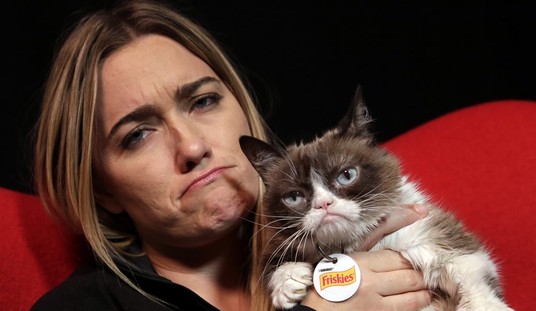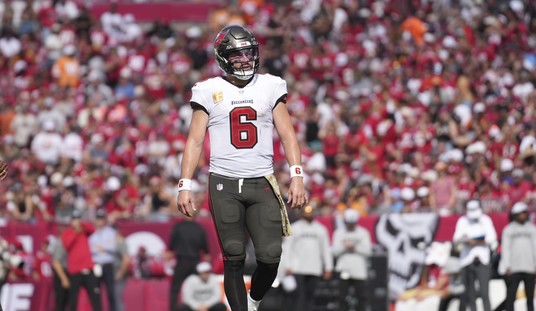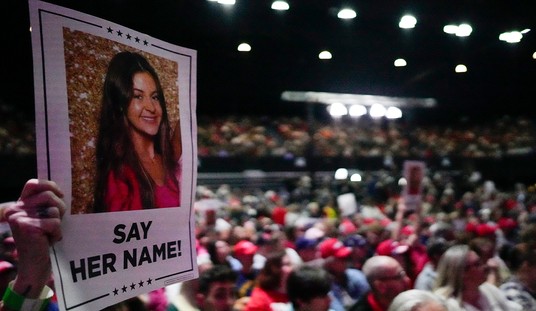The chatter today has been all about Lawrence Lindsey’s WSJ column about our dire fiscal situation. Excuse me — the meaningful chatter. The meaningless chatter has been about Michele Bachmann, and whether she’s the Gaffe-O-Matic or merely gaffetastic. After watching her embarrassing campaign launch yesterday, I can’t say I much care. Honestly, it was the worst GOP presidential announcement since the last one. Bachmann and Jon Huntsman might turn out to be the Dueling Flame-outs, bookending the left and right of the party.
But I digress, and we have serious business to cover. What Lindsey says about our spending problem comes down to: We are so screwed.
Some facts and figures for you:
The president’s budget of February 2011 projects economic growth of 4% in 2012, 4.5% in 2013, and 4.2% in 2014. That budget also estimates that the 10-year budget cost of missing the growth estimate by just one point for one year is $750 billion. So, if we just grow at trend those three years, we will miss the president’s forecast by a cumulative 5.2 percentage points and—using the numbers provided in his budget—incur additional debt of $4 trillion. That is the equivalent of all of the 10-year savings in Congressman Paul Ryan’s budget, passed by the House in April, or in the Bowles-Simpson budget plan.
Here’s what I got out of that: If the Ryan or Bowles-Simpson budgets were to become law, our economy would quickly right itself — and the resulting increase in interest rates would eradicate all the savings.
Did you get that? Without seriously drastic cuts — cuts that would make Paul Ryan blanch — we can’t fix this economy without wrecking the government. Or maybe it’s the other way around.
Can we tax our way out? Back to Lindsey:
The tax-the-rich proposals of the Obama administration raise about $700 billion, less than a fifth of the budgetary consequences of the excess economic growth projected in their forecast. The whole $700 billion collected over 10 years would not even cover the difference in interest costs in any one year at the end of the decade between current rates and the average cost of Treasury borrowing over the last 20 years.
Clinton-era tax rates won’t even begin to cover the spending problem. Not even close.
That leaves us with three possible outs: Cut the budget to the bone, hyperinflate away our debts, or default.
The most serious budget-cutter we have, Congressman Paul Ryan, is not nearly serious enough about the disaster we face. Or if he is serious, he doesn’t have enough of his party backing him up. And even if he had that, Ryan still would face a public too uninformed to understand or tolerate what must be done.
Option One, in other words, is off the table. Ain’t. Gonna. Happen.
So how about Option Two, Hyperinflation?
Inflation only as high as eight or ten percent is harmful to a nation’s economy, its savings, and even its social fabric. Hyperinflation destroys all of those things. It’s no remedy; it’s a cure worse than the disease.
That leaves us with Option Three: Default. Simply put, the government of the United States simply refuses to honor its debt obligations. It’s called “sovereign default” because you can’t take the government to its own courts to make it pay up.
Default would be terrible. The dollar would cease to act as the world’s reserve currency and that inflation we’ve spent the last forty years exporting to the rest of the world, would come flooding back to our shores all at once. Can you imagine how expensive a barrel of oil would be, if we had to scrounge up enough euro or yuan from our meager reserves, to pay for one?
And what about our budget? It would still be seriously out-of-whack — but Washington would lose the ability to borrow from overseas to cover the shortfall. Washington would either have to balance the budget — and right then, buster! — or start rolling the printing presses again. Call it “The Mother of All Quantitative Easings.”
Or just call it Option Two. We’re back to hyperinflation.
The way I see it right now, default still might be our least-bad option. Because default doesn’t necessarily lead to hyperinflation. Not if three things happen. We’ll call it the VodkaPundit Plan for Putting Washington Through Chapter 11. It goes like this:
1. Immediate cuts to spending.
2. A long-term plan to keep spending in line is enacted. (A glide-down path, along with maybe a balanced budget amendment.)
3. Hike interest rates. (To protect the dollar and give the middle class a reason again to save and investors a reason to invest. And also because “free” money makes people stupid.)
The first item is going to happen no matter what; we’re simply out of money. The second item is a necessary step to reassuring jilted creditors that maybe someday they can trust us again. And we are so deep in the hole that the third item might be possible only after we’ve defaulted. Lindsey never made that point in his piece, but it seems perfectly clear: Since we can’t even afford to pay what we already owe, default is looking like our least-bad option.
Not that I’m advocating default. I still think it would probably lead to hyperinflation. A government too paralyzed by cowardice to step out of the way of a moving train, probably doesn’t have the balls to make the hard choices my plan would entail.
If anyone can think of another way out, I’m all ears.










Join the conversation as a VIP Member